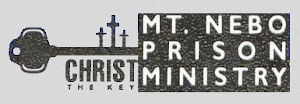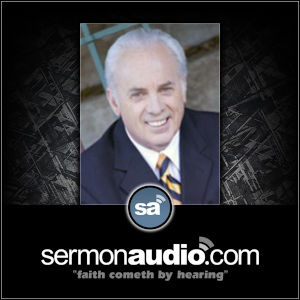Dates That Various Unbiblical Catholic Doctrines Were Announced
Dates That Various Unbiblical Catholic Doctrines Were Announced
Here is a list of doctrines and corresponding dates when they were introduced into the Roman Catholic Church. These doctrines are found nowhere in the Bible.
As you examine this list, bear in mind that the ROMAN Catholic Church was starting to form around the time that ROMAN emperor Constantine issued his “Edict of Milan“, in an attempt to ease up on persecution of Christians. This edict of his – along with his successor’s “Edict of Thessalonica” – resulted in serious compromising of true Biblical Christianity, as many pagans in the Roman empire brought their pagan religious customs and practices into this new and more “inclusive” version of Christianity called Catholicism. The true “remnant” Church (true followers of Christ and the Bible) continued to follow the teachings of the Scripture, but outside of this heavily corrupted blend of Christianity and paganism. Many of these remnant Christians were known as “anabaptists“. As this list shows, there were no designated “popes” until 607 AD. Up until that time, there were merely bishops, including the bishop of Rome. But to “validate” their claim of being the “one true Church” the Roman Catholic Church claims that the apostle Peter was the first Catholic pope and then they assign “pope-hood” to each bishop of Rome that came after Peter, disregarding the fact that there was no such thing as a pope until 607 AD. Even the pope’s title of “Pontifex Maximus” comes from the Latin term “high priest” after the pagan high priests of the Roman empire.
300 AD –
Prayers for the dead
300 AD –
Making sign of the cross
320 AD –
Special dress code of the clergy in worship
325 AD –
At the general council of Nice, 325, it was proposed indeed, probably by the Western bishop Hosius, to forbid entirely the marriage of priests; but the motion met with strong opposition, and was rejected.
325 AD –
The date for Easter was set.
375 AD –
Use of images in worship
379 AD –
Praying to Mary & Saints. (prayers of Ephraim Syrus)
385 AD –
In the West, the first prohibition of clerical marriage, which laid claim to universal ecclesiastical authority, proceeded in 385 from the Roman church in the form of a decretal letter of the bishop Siricius to Himerius, bishop of Tarragona in Spain.
389 AD –
Mariolatry begins with Gregory Nazianzen, who mentions in a eulogy, how Justina had besought the virgin Mary to protect her virginity.
389 AD –
Mass as Daily Celebration
416 AD –
Infant baptism by immersion commanded of all infants (Council Of Mela, Austin was the principal director)
430 AD –
Exaltation of Virgin Mary: "Mother of God" first applied by the Council of Ephesus
502 AD –
Special dress code of the Clergy all the time.
500 AD –
The "Habit" of Nuns (Black gowns with white tunics)
519 AD –
Lent
526 AD –
Extreme Unction (last rites)
593 AD –
The Doctrine of Purgatory popularized from the Apocrypha by Gregory the Great
600 AD –
First use of Latin in worship (Gregory I)
Beginning of the Orthodox/Roman Catholic church as we know it today in its present organization.
607 AD –
First Pope: Boniface III is the first person to take the title of "universal Bishop" by decree of Emperor Phocas.
608 AD –
Pope Boniface IV. turns the Pantheon in Rome into a temple of Mary ad martyres: the pagan Olympus into a Christian heaven of gods.
670 AD –
Instrumental music: first organ by Pope Vitalian
709 AD –
Kissing of Pope Constantine's feet
753 AD –
Baptism by sprinkling for those on sick beds officially accepted.
787 AD –
Worship of icons and statue approved (2nd council of Nicea)
787 AD –
Rome (Latin) and Constantinople (Greek) part ways and begin the drift towards complete split, resulting in two denominations emerging in 1054 AD.
850 AD –
Burning of Holy Candles
Holy Water, mixed with a pinch of salt and blessed by the priest, was authorized
890 AD –
Veneration of St. Joseph
965 AD –
Baptism of bells instituted by Pope John XIII
995 AD –
Canonization of dead saints, first by Pope John XV
998 AD –
Good Friday: fish only and the eating-red meat forbidden
1009 AD –
Holy water
1022 AD –
Penance
1054 AD –
Roman Catholics officially embrace instrumental music, Orthodox reject instrumental music down to the present time.
1079 AD –
Celibacy enforced for priests, bishops, presbyters (Pope Gregory VII)
1090 AD –
Rosary beads: invented by Peter the Hermit
1095 AD –
Instrumental music
1190 AD –
Sale of Indulgences or "tickets to sin" (punishment of sin removed)
1215 AD –
Transubstantiation by Pope Innocent III, Fourth Lateran Council
1215 AD –
Auricular Confession of sins to priests instituted by Pope Innocent III, (Lateran Council)
1215 AD –
Mass a Sacrifice of Christ
1217 AD –
Adoration and Elevation of Host: ie. communion bread (Pope Honrius III)
1230 AD –
Ringing bells at Mass
1251 AD –
The Scapular, the brown cloak worn by monks invented by Simon Stock
1268 AD –
Priestly power of absolution- CONFESSION of sin to a priest.
1311 AD –
Baptism by sprinkling accepted as the universal standard instead of immersion for all, not just the sick. (Council of Ravenna)
1414 AD –
Laity no longer offered Lord's cup at communion (Council of Constance)
1439 AD –
Purgatory a dogma by the Council of Florence (see 593 AD)
1439 AD –
Doctrine of Seven Sacraments affirmed
1480 AD –
The Inquisition (of Spain)
1495 AD –
Papal control of marriage rights
1534 AD –
Order of Jesuits founded by Loyola
1545 AD –
Man-made tradition of church made equal to Bible (Council of Trent)
1545 AD –
Apocryphal books added to Bible (Council of Trent)
1546 AD –
Justification by human works of merit
1546 AD –
Mass universally said in Latin (see 600 AD)
1547 AD –
Confirmation
1560 AD –
Personal opinions of Pope Pius IV imposed as the official creed
1854 AD –
Immaculate conception of Mary
1864 AD –
Syllabus Errorum [Syllabus of Errors] proclaimed that "Catholic countries" could not tolerate other religions, (no freedom of religion), conscience, separation of church and State condemned, asserted the Pope's temporal authority over all civil rulers (Ratified by Pope Pius IX and Vatican Council) condemned
1870 AD –
Infallibility of Pope (Vatican council)
1870 AD –
Confirmed Unum Sanctum (no salvation outside of the Catholic Church).
1908 AD –
All Catholics should be christened into the church
1930 AD –
Public Schools condemned by Pope Pius XII (see 1864 AD)
1950 AD –
Assumption of the body of the Virgin Mary into heaven shortly after her death. (Pope Pius XII)
1954 AD –
Immaculate conception of Mary proclaimed by Pope Pius XII
1995 AD –
The use of girls in the traditional altar boy duties
1996 AD –
Catholics can believe in Evolution (Pope John Paul II)
Related Articles About Unbiblical Catholic Inventions & False Teachings:
- A list of false teachings in the Roman Catholic Church
- List Of Catholic Heresies And Human Traditions





















Leave a Reply
You must be logged in to post a comment.